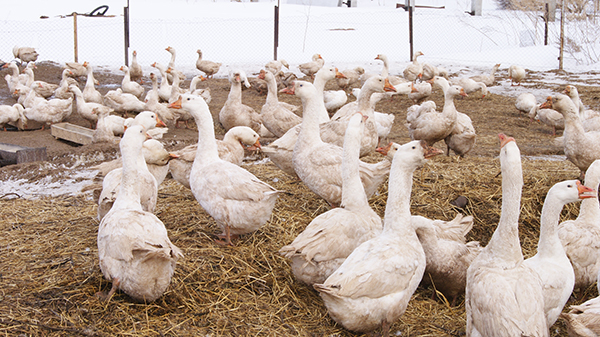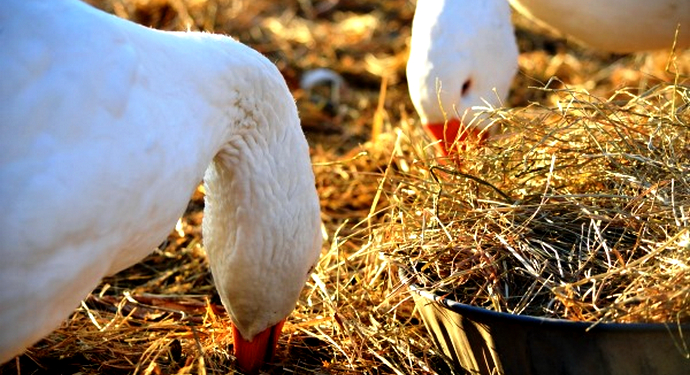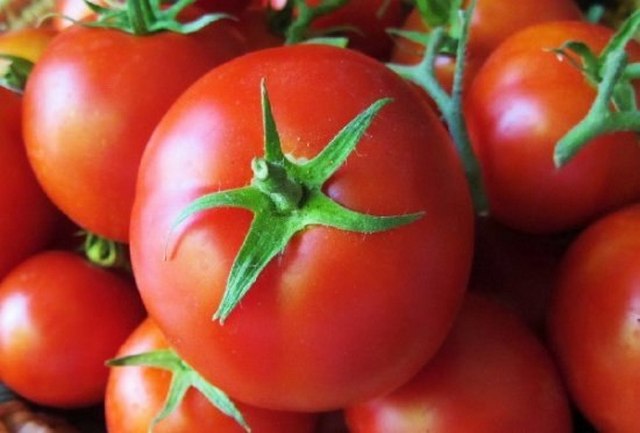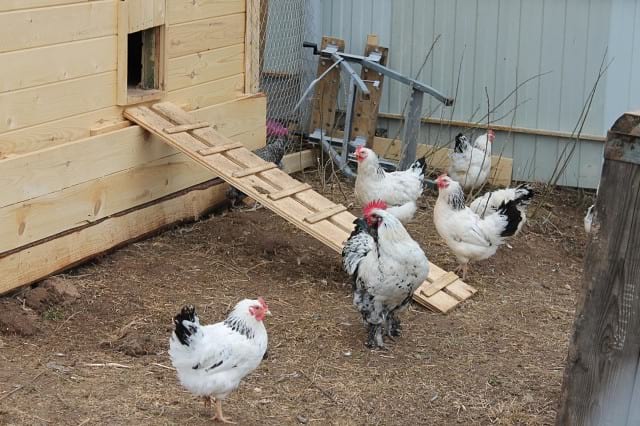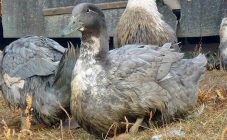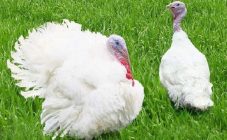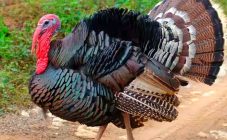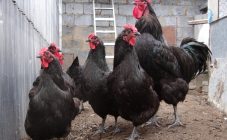Content:
For several decades, Linda geese have been the most popular among poultry breeders. In breeding, they are unpretentious, and in their characteristics they are ahead of all known breeds. Their main advantage is body weight, unattainable for any other breed of geese in the world.
History of the breed
The variety in question is a hybrid belonging to heavy breeds. Unlike the previously most popular Hungarian goose breed, Linda appeared in our country quite recently. The breeding was carried out in the vicinity of Nizhny Novgorod, hence the first name - Gorky geese. Initially, breeders used Adler, Solnechnogorsk, Chinese and ordinary geese that lived in the Gorky region for crossing.
Further, it was decided to improve the quality of feathers and down. For this, the obtained specimens were mixed with the Arzamas and Lands individuals. After that, the quality characteristics of the breed were improved, without going beyond the specimens obtained at the previous stages. The result was a breed with excellent body weight gain (by 2 months they already weigh 4 kg), excellent endurance and a long life span. In 1994, a new variety was registered in the State Register.
Characteristics and features of the breed
It is not difficult to distinguish the geese of the Lindovskaya breed: they have a beautiful, regular breed appearance and large size.
Geese Linda are bred specifically for slaughter, as due to their size they have a large amount of tasty meat. Also favorably distinguished by their appearance.
Description of Linda geese:
- the head is large, strong, but at the same time it looks proportional;
- there is a lump-like growth on the forehead;
- beak bright red-orange, strong, large, strongly curved;
- under the beak there is a fold of leather - a wallet;
- eyes are round, large, usually blue;
- the neck is long and powerful;
- the body is long, massive, the muscles are well developed;
- the chest is wide, the back is straight with the correct set;
- the tail is small, set low;
- paws are powerful, thick, widely spaced, dark orange in color;
- feathers of a boiling white color with small splashes of beige, there are gray spots on the back and wings, downy clothes are thick, seasonal, and have a high value in production.
Despite their size, they are very active and mobile. Linda geese are noisy and love to run. Ganders prefer to protect females, therefore, in case of danger to the latter, they show aggression and can fight. Lind - translated from German means "gentle", which is very suitable for their character in relation to people.
With the instinct of hatching chicks in this breed of geese, not everything is clear: in most geese it is practically absent.It happens that after the eggs appear, they do not sit on them, it happens that they leave the eggs in the process of incubation. However, there are more caring mothers: they completely incubate the entire incubation period, and in the future they are anxious and attentive to the hatched chicks. However, the main way to get offspring is to use an incubator until the babies hatch.
Body weight and egg production
The average weight of Linda males stops at 7.5-8 kg, but some specimens reach up to 12 kg. Females weigh less - up to 7 kg. It is also necessary to note the excellent taste and nutritional characteristics of the meat of geese of this breed. Their body has a uniform fat layer, in which there is a large amount of protein - 20-21% and fat - 8-9%. In the process of growth, Linda's goslings can gain up to 100 g of weight per day, and by the 4th month of life, the chicks reach half of their adult weight.
The Linda goose becomes sexually mature by the age of 8 months. Oviposition begins upon reaching 200-250 days after birth. In the first year, the goose lays 45-50 eggs. The mass of each egg in the first clutches is 100 g. Later, the mass of eggs reaches 120-150 g. Eggs in geese appear from early February to early July.
Maintenance and care
The main goal of any poultry farmer is to obtain high-quality and rich meat and egg products. To do this, you need to organize the right living and care conditions. It is recommended to keep geese in a special room - a poultry house. The poultry house should be spacious, clean and bright - at least 1 m² for each individual. There must be special drinkers and feeders. In addition, you need to equip the nests. How many sockets are required? For 4 adult females at least 1 nest.
The floor of the house should be covered with a layer of straw, peat and sunflower seed skins 10 cm high. This will prevent the birds from drafts.
Feeding
In addition to correct and comfortable living conditions, geese need a full and sufficient diet, because without observing certain feeding conditions, it will not work to become the owner of healthy and strong birds with high meat and egg characteristics. The diet of Linda geese differs not only by age, but also strongly depends on the season.
After hatching, the Linda goslings are fed with boiled yolks, ground into crumbs, and they must be diluted with boiled water. With the onset of the fifth day, cottage cheese is introduced into the diet and chopped greens - meadow herbs and onions - are added. You cannot overdo it with greens: unlike most relatives, the gastrointestinal tract of the chicks of this breed does not cope well with its large volume. A delicacy for goslings bread crusts soaked in water.
Starting from the 10th day, the chicks are given corn porridge and boiled potatoes. By the 21st day, chopped raw vegetables and roots should appear in the diet. After 3 weeks, the chicks are gradually being transferred to adult feed.
In the warm summer season, if there is a large walking area with lawns and access to a reservoir with fresh water, geese do not require special care - they are grazed. In the evening, the bird is given compound feed (no more than 200 g per 1 bird). In the absence of the above conditions, it is required to introduce fish or meat and bone meal into the diet. In addition, you need to put boxes with shells and chalk for the geese.
In winter, there is no opportunity for geese to self-feed, so they feed with grain and chopped vegetables: pumpkin, carrots, beets, potatoes. You can also add some dry grass and hay to your winter diet. Geese should have constant access to fresh water. Birds can drink less when snow falls, but water containers should always be full.
Pros and cons of the breed
The advantages of the goose breed in question are as follows:
- very rapid weight gain in young animals, which can continue even after gaining a permanent feather;
- incomparable nutritional and taste characteristics of both meat and eggs; Linda geese carcasses do not lose nutritional value even after deep freezing;
- experienced poultry farmers can put geese on a special diet to use their liver in foie gras;
- undemanding to temperature conditions;
- a large number and high quality of valuable goose down;
- high survival rate of chicks, disease resistance;
- good egg production;
- wonderful nature of birds, non-conflict.
The breed has few disadvantages, but they also have:
- weak instinct for incubating chicks;
- the presence of noise from their behavior;
- tendency to vitamin deficiency, which is typical in spring with a lack of vitamins in the feed;
- require a lot of walking space and access to fresh water.
So, Linda geese is a popular breed for getting goose meat. The presence of a large volume of meat in an adult and the possibility of using the goose liver in cooking negate a few shortcomings of the breed. In addition, raising Linda goslings is possible at home.


